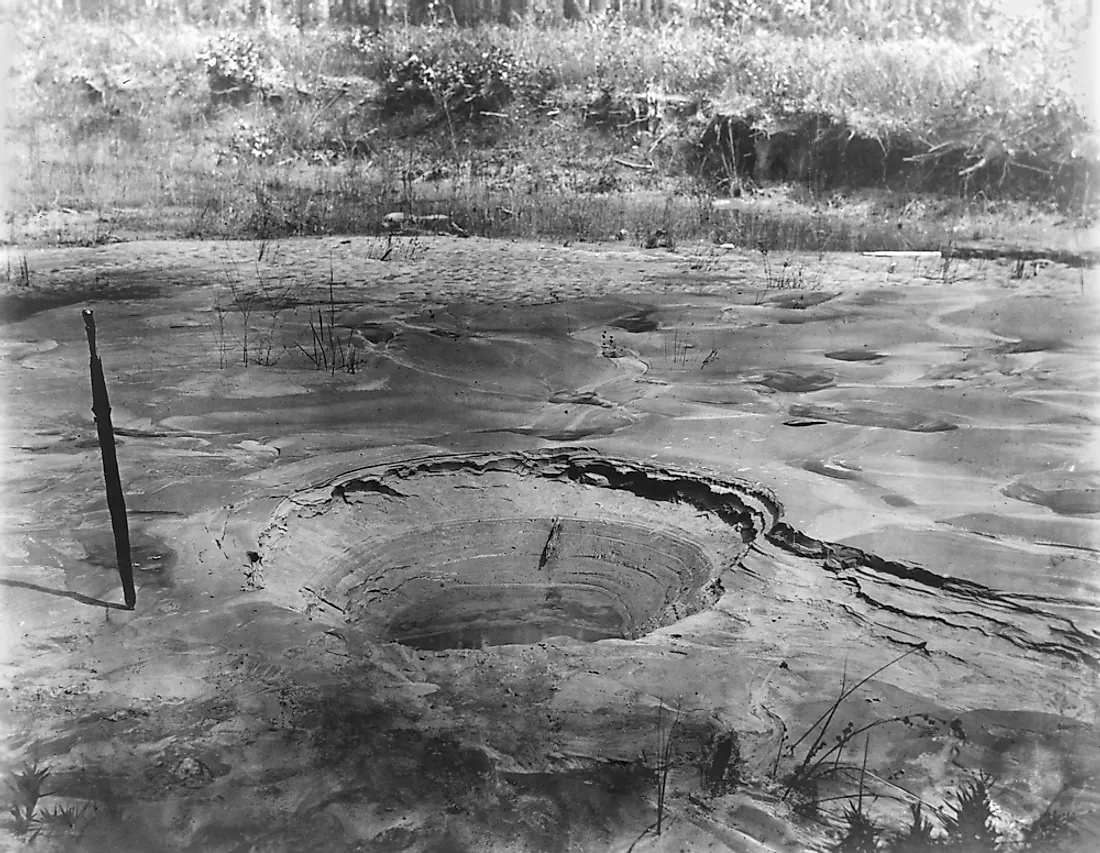What Is a Sand Volcano?

A sand volcano is a cone shaped geographic landform that results from the expulsion of liquefied sand from a central point onto the land surface. The ejected sand accumulates in a cone shape, sloping away from the center. As the expelled sand slopes down, a crater is formed at the apex, with the resultant land form resembling a volcano. Sand volcanoes are also referred to as sand boils, and are usually small in size, with the diameter of the base of the sand volcano ranging from millimeters to meters. Sand volcanoes have been negatively implicated in the exacerbation of effects of natural disasters like earthquakes and flooding.
Formation of a Sand Volcano
A sand volcano is formed through the soil liquefaction process. It begins in the sand, beneath the surface, which often becomes water logged. The resultant effect of the interaction between the liquefied sand and the sand on the surface is what often leads to the sand boil phenomenon. The liquefied sand loses strength upon saturation with water. Under the pressure exerted by the surface sand, which is stronger, compaction occurs and upon exploitation of a line of weakness, the liquefied sand and water are ejected onto the surface. Once on the surface, the extruded products spread laterally around the surface opening. Repetition of the process leads to an increase in the size of the sand boil.
Sand Volcanoes and Earthquakes
The liquefaction process in sand volcanoes results in catastrophic effects of earthquakes. The deformation, sinking and rotation of structures has occasionally been associated with sand boils. In 2001, an earthquake in north-western India, near Bhuj, caused massive property damage and numerous deaths. The havoc caused was associated with sand volcanoes, as huge cracks were visible and sand and water were expelled from these cracks in what looked like volcanic fountains. In San Francisco, the eruption of a sand volcano was linked to the 1989 Loma Prieta earthquake.
One of the most powerful series of earthquakes occurred between 1811 and 1812 in New Madrid, Missouri. In this instance, liquefaction was implicated in the course of the earthquakes. One report note cracks opening from which sand and water was expelled, thus supporting the notion that there is a link between liquefaction, sand volcanoes, and earthquakes.
Sand Volcanoes and Floods
Levees are flood banks that keep rivers along their plains restricted to low lying coastlines. In so doing they prevent and control flooding. These dykes can be artificially erected or occur naturally. The liquefaction process involved in formation of sand volcanoes has been implicated in levee failure leading to unnecessary flooding. Sand boils create an imbalance between two sides of a levee in terms of pressure, which leads to internal erosion, and eventually levee failure. Efforts are often made to counter the effect of sand boils by creating a body of water around the boil using sandbags. In 2011, a sand volcano in Cairo, Illinois was implicated in flooding that occurred at the confluence of Ohio River and Mississippi River.











